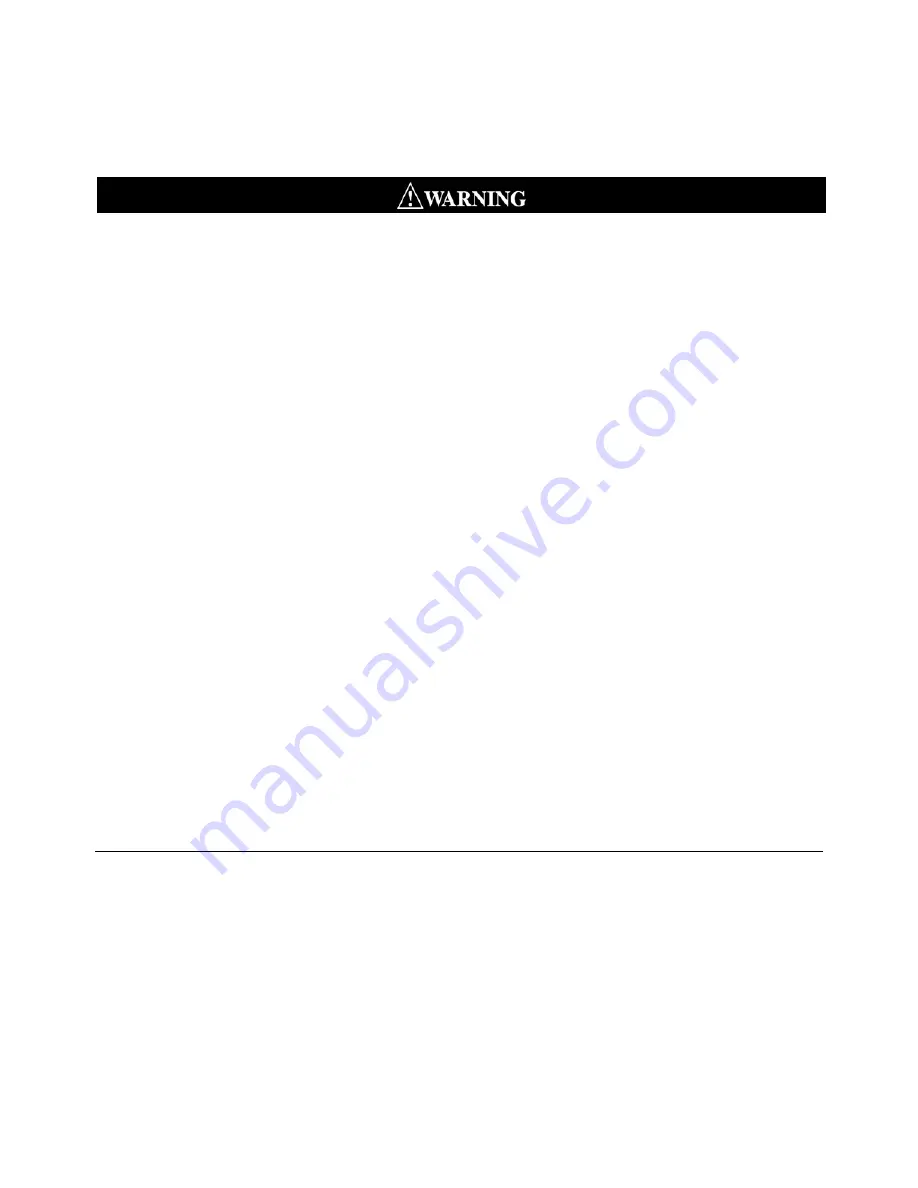
14
OPERATING INSTRUCTIONS
Use of this respirator in atmospheres for which it was not NIOSH certified or designed
may result in
sickness or death
. Do not wear this respirator where:
-
Atmospheres contain hazardous vapors or gases
-
Atmospheres are oxygen deficient
-
Contaminant concentrations are unknown
-
Contaminant concentrations are Immediately Dangerous to Life or Heath (IDLH)
-
Contaminant concentrations exceed the assigned protection factor (APF) recommended for the applicable
headpiece or the APF mandated by specific government standards, whichever is lower. Refer to the
User
instructions
provided with the applicable headpiece.
Do not enter a contaminated area until properly donning the respirator system. Do not remove the respirator
before leaving the contaminated area.
Doing so may result in sickness or death
.
Contaminants that are dangerous to your health include those that you may not be able to see or smell. Leave
the contaminated area immediately if any of the following conditions occur.
Failure to do so may result in
sickness or death.
-
Airflow decreases or stops
– Any part of the system becomes damaged
– Airflow into the respirator decreases or stops
– Breathing becomes difficult
– You feel dizzy or your vision is impaired
– You taste or smell contaminants
– Your face, eyes, nose or mouth become(s) irritated
– You suspect that the concentration of contaminants may have reached levels at which this respirator may
no longer provide adequate protection.
Do not expose blower/filter assembly directly to sparks or molten metal spatter. Direct contact with sparks or
molten metal spatter may damage the filter, allowing unfiltered air into the breathing zone,
which may result
in sickness or death
, and may cause the filter or blower housing to ignite,
resulting in serious injury,
sickness or death
1.
After successfully completing the donning procedures, enter the contaminated area, breathing normally.
Note:
This PAPR unit and battery are not waterproof. They should not be submersed or subjected to heavy
spraying with water or other liquids. High concentrations of mist or sprays may temporarily clog
filters and cause airflow to drop below safe levels.
2. Remove the respirator system in a clean area. Refer to the Inspection Cleaning and Storage sections of
these
User Instructions
for cleaning, inspection and storage information.
Summary of Contents for Air-Mate PAPR 231-01-30
Page 8: ...8 Fig 1 ...



























